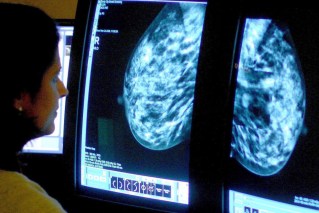Glitter bombshell as EU ban comes into effect


The EU is waving goodbye to plastic glitter. Photo: Getty
Kindergarten projects and influencer make-up tutorials could get much less sparkly, with a glitter ban coming into effect across the European Union this week.
The European Commission’s microplastics restriction was in force as of Tuesday, banning the sale of plastic glitter that is commonly used for art and crafts, along with microbeads.
But it’s not all doom and gloom for lovers of sparkle.
Products already on shelves may continue to be sold until stock runs out, and glitter used in products such as cosmetics and detergents can continue being sold until the end of their respective transitional periods.
Biodegradable or soluble glitter is still legal, as is plastic glitter contained in solid forms, such as glitter glue, paint, jewellery and snow globes.
However, plastic glitter that easily falls off decorative objects, such as Christmas decorations or party hats, falls under the ban, as do goods containing microbeads (small plastic beads used in cosmetic products for exfoliation).

Exfoliation products containing microbeads are also targeted under new regulations. Photo: Getty
The measures affect the EU’s 27 member countries, including Germany and Spain.
“The purpose is not to ban all glitter but replace plastic glitter with more environmentally friendly glitter that does not pollute our oceans,” the European Commission stated.
“It is estimated that 42,000 tonnes of microplastics intentionally added to products are released in the EU every year.
“The new rules will prevent the release to the environment of about half a million tonnes of microplastics.”
Why are microplastics a concern?
Microplastics are defined as synthetic polymer particles measuring less than five millimetres that are organic, insoluble and not biodegradable.
Once they’re released into the environment, they’re almost impossible to remove.
This pollution is pervasive in fresh water and salt water bodies of water, as well as on land and in soil – and wherever microplastics are, they are ingested by many species, including humans.
Microplastics have been found in everything from drinking water, to the tissue of marine animals such as whales, and human breast milk.

Tiny bits of plastic are all around you, and probably inside of you. Photo: Getty
“When I started doing this work in 2014, the only studies being done involved looking for where they are,” Alice Horton, a marine scientist at the UK’s National Oceanography Centre, told National Geographic.
“We can stop looking now. We know wherever we look, we will find them.”
It’s estimated the average adult consumes about 2000 microplastics per year through salt alone.
The possible side effects of microplastics in the human body remain unclear, but accumulated microplastics have been reported to lead to malnutrition in marine and aquatic animals, along with inflammation, reduced fertility and mortality.
What’s next?
By 2030, the European Commission aims to reduce microplastics pollution by 30 per cent.
Plastic glitter in rinse-off cosmetics will be banned in October 2027; in leave-on cosmetics in October 2029; and in all make-up, lip and nail cosmetics in October 2035.
Granular infill material used on artificial sport surfaces – which the European Commission labelled the largest source of “intentionally added microplastics in the environment” – will also be banned in eight years.
The costs of the glitter, microbeads and granular infill material bans for all stakeholders, industry, sports clubs and municipalities are estimated to be up to €19 billion ($31.7 billion) over the next 20 years.
On Monday, the European Commission also unveiled its plan to reduce microplastics pollution from plastic pellets – these are the raw material used for producing all plastics, contributing to parts of everything from clothes to cars.

Lentil-sized plastic pellets have been found to litter beaches all around Australia. Photo: ABC
Currently, up to 184,000 tonnes of pellets are released in the environment each year due to mishandling throughout the supply chain.
A reduction of pellet losses between 54 and 74 per cent could potentially contribute up to a quarter of the European Commission’s 2030 microplastics pollution reduction target.
“When it comes to microplastics leakage, prevention is the only solution,” said Maros Sefcovic, European Commission executive vice-president.
The European Commission has proposed to install a regulation to prevent pellet losses, which will apply to EU and non-EU economic operators.
This would require businesses to adopt best handling practices, certifications and self-declarations of compliance and a “harmonised” methodology to estimate pellet losses.
The proposal is set to be discussed by the European parliament and the council.








